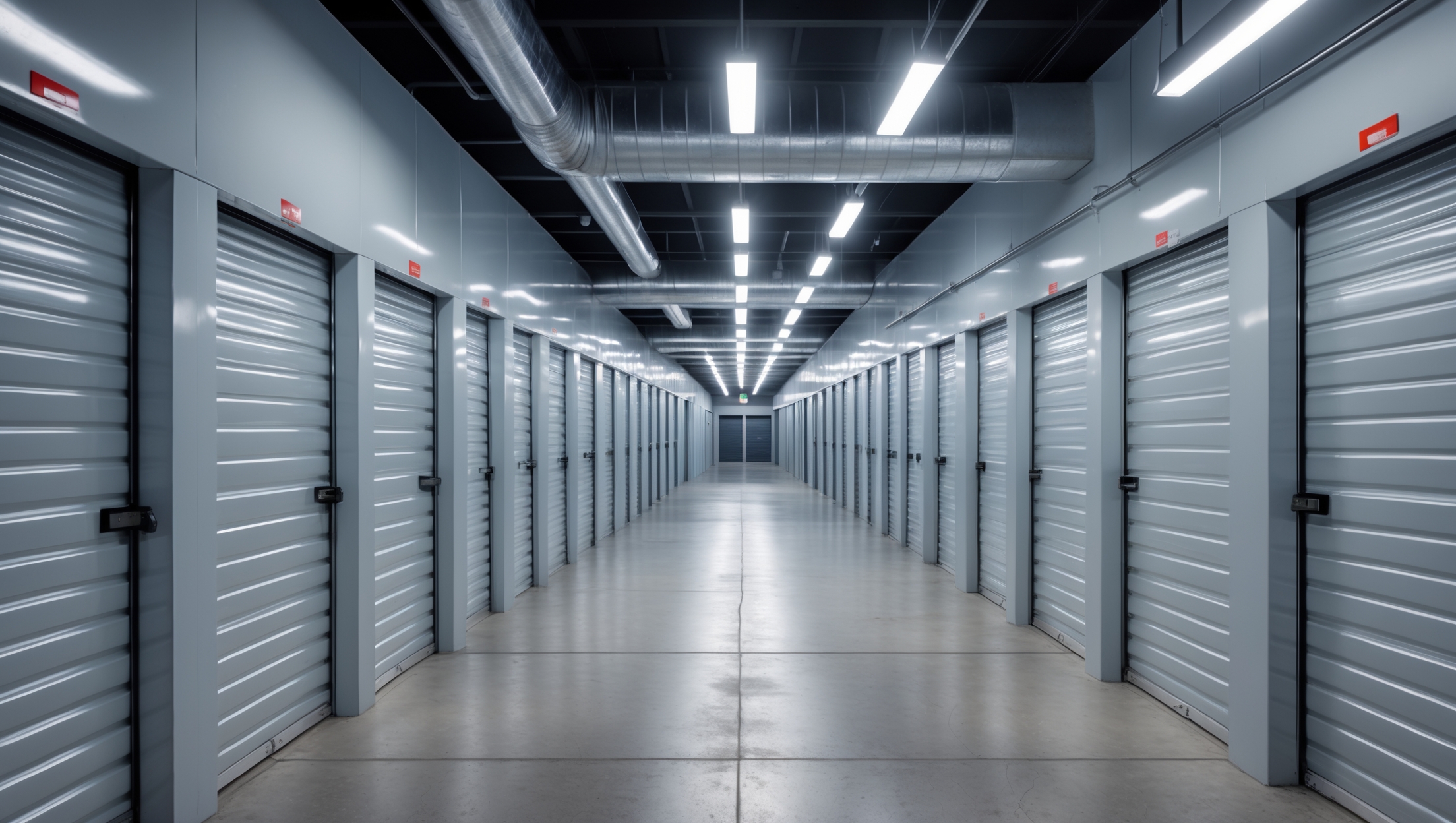The Real Cost of Climate-Controlled Storage: ROI, Upkeep, and When It Pays Off
Introduction: Is Climate-Controlled Storage Worth the Investment?
As the moving and storage industry evolves to meet customer demand, climate-controlled storage has rapidly shifted from a luxury to an expectation in many markets. Facility owners and operators are asking tough questions: What does it really cost to offer climate-controlled units? Will the investment pay off, and how soon? How intensive is the ongoing upkeep? And most importantly, does adding climate control make sense for your specific operation, climate, and customer base?
This in-depth guide breaks down every angle: the initial outlay and hidden infrastructure costs, ongoing maintenance and utility expenses, premium pricing potential, occupancy trends, and how to calculate your return on investment. Whether you’re a storage facility owner considering a retrofit or a new build, or a moving company evaluating value-add partnerships, this article delivers actionable insights to help you make financially sound decisions.
What Is Climate-Controlled Storage?
Climate-controlled storage refers to units equipped with systems that regulate temperature and, in many cases, humidity. These systems protect sensitive items—furniture, electronics, artwork, documents, and more—from the damaging effects of extreme heat, cold, or moisture. Typical climate parameters are:
- Temperature: Kept between 55°F and 80°F (13°C – 27°C)
- Humidity: Maintained between 30% and 50% (when dehumidification is included)
Common in both new facilities and retrofits, climate-controlled units require fully enclosed, insulated construction and HVAC systems designed for 24/7 operation. The appeal is clear: customers will pay a premium to protect valuables. But how much does it cost to provide—and is the investment justifiable?
Breaking Down the Costs
1. Construction and Retrofitting
The biggest up-front expense is the construction or retrofit of climate-controlled space. Factors include:
- Building Envelope: Upgrading insulation, sealing leaks, adding vapor barriers, and ensuring airtight doors/windows. Expect $8–$15 per square foot for new builds; retrofits can run higher due to demolition and rework.
- HVAC Installation: Sizing and installing heating, ventilation, and air conditioning systems. Costs range from $3–$7 per square foot, depending on the system’s complexity and efficiency.
- Electrical Upgrades: Additional wiring, controls, and capacity for continuous HVAC operation. Budget $1–$2 per square foot.
- Fire Suppression & Monitoring: Enhanced fire alarms and sprinklers may be required by code in conditioned spaces. Allow $1–$3 per square foot.
2. Ongoing Utility Expenses
Climate-controlled units draw significantly more power than traditional storage. Utility costs vary by climate and insulation quality, but as a rule of thumb:
- Electricity: $0.80–$1.50 per square foot annually in moderate climates; $1.50–$3.00+ in hot/humid or very cold regions.
- Natural Gas (if used for heating): Adds $0.20–$0.60 per square foot, depending on winter severity.
It’s crucial to model these costs year-round, accounting for local utility rates and weather patterns. Poorly insulated or leaky buildings will cost much more to operate.
3. Maintenance and Upkeep
Continuous climate control means more frequent system maintenance:
- HVAC Filters: Replace every 1–3 months; $15–$30 per unit per change.
- Annual Inspections: Professional checks of compressors, ductwork, thermostats, and sensors; $250–$500 per system per year.
- Repairs: Budget for unexpected HVAC breakdowns—compressor replacements can exceed $2,000.
- Humidity Control: Dehumidifiers may require periodic draining and cleaning to avoid mold growth.
Neglecting maintenance can result in costly system failures, customer complaints, or even legal liability if stored goods are damaged due to out-of-range conditions.
4. Insurance and Compliance
Insurance premiums may increase due to the higher value of items stored in climate-controlled units. Additionally, local building codes often impose stricter fire and safety requirements. These factors can add 5–15% to your annual insurance and compliance costs.
Revenue Potential and Premium Pricing
How Much More Can You Charge?
Climate-controlled units command a significant premium—typically 20% to 50% higher than standard units of the same size. In urban or high-humidity markets, premiums can exceed 70%. For example, a 10×10 standard unit renting for $120/month might fetch $165–$200/month with climate control.
Occupancy Trends
- Higher Demand: As awareness grows, more customers seek climate-controlled options for peace of mind.
- Reduced Turnover: Tenants with valuable items are more likely to rent longer-term.
- Market Differentiation: Offering climate-controlled units can give you a competitive advantage, especially in oversupplied markets.
What Sells Climate Control?
- Education: Clearly communicate the risks of heat, cold, and humidity to help customers understand the value.
- Transparency: Share stats on temperature/humidity monitoring, system backups, and maintenance schedules.
- Targeted Marketing: Focus on local collectors, business clients, and households with sensitive possessions.
Calculating Return on Investment (ROI)
Step 1: Estimate All Costs
- Total up front (construction, HVAC, insulation, electrical, permitting).
- Annual operating costs (utilities, maintenance, insurance, staffing).
Step 2: Project Increased Revenue
- Estimate premium rents and likely occupancy rate for climate-controlled units.
- Account for possible increases in insurance, compliance, or marketing costs.
Step 3: Calculate Payback Period
Divide the total investment by the projected annual net gain (revenue minus added expenses). For example:
- Investment: $400,000 (construction + systems for 8,000 sq ft)
- Added Annual Revenue: $80,000 (premium rents @ 90% occupancy)
- Added Annual Expenses: $24,000 (utilities, maintenance, insurance)
- Net Gain: $56,000/year
- Payback Period: $400,000 / $56,000 ≈ 7.1 years
Most industry experts target a 5–8 year payback for climate-controlled retrofits. New builds may see faster ROI due to integrated design efficiencies.
When Does Climate Control Make Sense?
Best Scenarios
- Hot, Humid, or Variable Climates: More extreme weather means more demand for protection.
- Urban or Higher-Income Markets: Customers with valuables are willing to pay premiums.
- Business/Commercial Clients: Document storage, inventory, electronics, and pharmaceuticals often require strict climate control.
When to Reconsider
- Low-Demand Rural Areas: Premium units may sit vacant if local customers don’t value climate control.
- High Utility Costs: If electricity is expensive and insulation is poor, margins may be thin.
- Poor Building Condition: Retrofitting drafty, leaky, or uninsulated buildings can be cost-prohibitive.
Upkeep: Essential Maintenance Tasks for Facility Owners
Regular HVAC Servicing
- Change air filters every 1–3 months to maintain airflow and air quality.
- Schedule professional inspections and tune-ups twice per year (pre-summer and pre-winter).
- Monitor refrigerant levels and check for leaks to prevent system failures.
Humidity Control and Mold Prevention
- Inspect dehumidifiers and condensate drains monthly.
- Look for signs of condensation or musty odors inside units; address promptly.
- Seal gaps and repair insulation as needed to prevent moisture intrusion.
Temperature and Humidity Monitoring
- Install digital loggers to track temperature and humidity levels in every zone.
- Set up alerts for out-of-range readings to prevent damage and reduce liability.
Emergency Preparedness
- Maintain backup power for HVAC (generator or battery systems) to protect stored goods during outages.
- Train staff on HVAC system resets, alarm silencing, and customer communication protocols.
Case Study: Climate Control Retrofit in a Midwestern Facility
One 60,000-square-foot storage facility in the Midwest undertook a phased retrofit to add climate-controlled units. Here’s a high-level summary of their experience:
- Scope: 10,000 sq ft conversion in two phases.
- Investment: $180,000 for construction and HVAC upgrades.
- Utility Increase: $12,000/year (primarily electricity).
- Premium Achieved: 42% higher rent per sq ft compared to standard units.
- Occupancy: 97% within 18 months; waitlist developed for climate-controlled spaces.
- Payback: Achieved in 4.6 years—faster than projected due to strong demand.
Key takeaways: Proper insulation and system sizing kept utility costs manageable, while targeted local marketing educated customers about the benefits. Facility reputation improved, increasing referrals and online ratings.
Tips for Maximizing Efficiency and Profit
- Choose High-Efficiency HVAC: Look for ENERGY STAR-rated systems and variable-speed compressors to reduce energy bills.
- Zone Your Facility: Divide climate-controlled areas into separate zones to optimize energy use based on occupancy.
- Automate Monitoring: Invest in smart thermostats and remote monitoring for real-time alerts and reporting.
- Educate Tenants: Use signage, email campaigns, and website FAQs to highlight the value of climate control and proper storage practices.
- Regularly Review Rates: Adjust climate-control premiums annually based on demand, utility costs, and competitor offerings.
Conclusion: Making an Informed Decision About Climate-Controlled Storage
Climate-controlled storage is more than a luxury—it’s an investment in your facility’s reputation, revenue potential, and long-term competitiveness. As more customers recognize the risks of storing valuables in extreme conditions, demand for climate-controlled units will continue to rise. However, the decision to build or retrofit climate-controlled storage is not one-size-fits-all. Upfront costs are significant, and ongoing expenses can erode margins without careful planning, efficient systems, and rigorous maintenance.
Before you invest, analyze your local climate, customer demographics, and competitor offerings. Develop a detailed cost and revenue model, including utility and maintenance projections. Prioritize high-quality insulation and right-sized HVAC systems to minimize operating expenses. Ensure your staff is trained to monitor conditions and respond to emergencies quickly. And above all, educate your customers—clear communication about the benefits of climate control will help you command premium rates and maintain high occupancy.
For many operators, climate-controlled storage delivers a strong ROI and positions your business as a market leader. But success depends on making data-driven decisions, maintaining systems diligently, and delivering on the promise of true protection for your tenants’ most valued possessions.






